It’s hard to add a tradition. Traditions take time and have to be something really special to jump the cue. The yearly Doctor Who Christmas episode has become a tradition in record time and one of my favorites. The best of these is magnificent television. The worst is… Well, up through #8 should be watched every year. Watch #14 if it happens to come on TV when you’ve nothing better to do.
Note: I said Christmas episode, not Christmas special, as there is one ep that isn’t a special, so most rankings are one short.
Starting with the least:
#14 Last Christmas (2014)
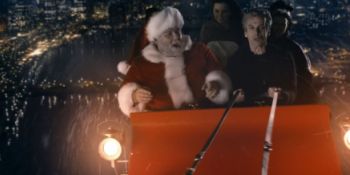 Twelve, Clara
Twelve, Clara
The least of the Christmas specials. Nothing original in sight. We’re given Inception‘s dream within a dream without a touch of irony, delivered via Alien‘s facehuggers. Since we know from the beginning that everything is a dream, nothing matters. It doesn’t help that the ep is dealing with the huge mistake that was the Clara/Danny relationship nor the rubbish split of The Doctor and Clara (to be fair the actress had quit and then changed her mind). However, it’s an acceptable diversion.
#13 The Return of Doctor Mysterio (2016)
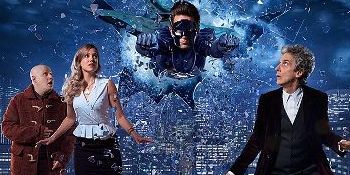 Twelve, Nardole
Twelve, Nardole
After a twelve-month drought following the spectacular The Husbands of River Song, this is one of the most disappointing moments in Who history. It isn’t a bad episode; it isn’t significant enough. It is emotionally empty. Since superheroes are all the rage, they added a costumed superhero to the Who universe, but they had no idea of what to do with one and nothing to say. There’s some lackluster villains, some ho-hum new characters, and a forgettable story. Twelve is in pretty good form but that’s not enough to make this memorable. That doesn’t mean it is a bad time. It’s a pleasant watch, but not an ep you’ll dwell on after it is done.
#12 The End of Time Parts 1 & 2 (2009/10)
 Ten, Wilfred
Ten, Wilfred
I am being really kind by evaluating both parts together. Everything good—the farewell to Ten—is in the second half that was broadcast at New Year’s. So if I were to only count Part 1, it would be at the bottom of the bottom. So much is painful: Hulk-jumping, electro, super, undead Master. Turning everyone into The Master and then just tossing that plot. The misuse of Donna. Wilfred turned into a moron. Leaping Doctor. The pistol target switching. Most of this two-parter is trash, but at least it isn’t boring trash.
And then we have the ending: deeply emotional, occasionally funny, and thoughtful. The last 20 minutes are gold. It’s a proper ending for Ten.
#11 The Doctor, the Widow and the Wardrobe (2011)
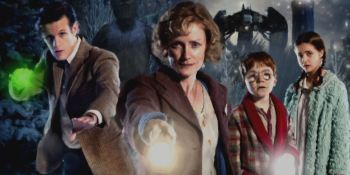 Eleven
Eleven
We had A Christmas Carol, so now we get Narnia. The Doctor is irrelevant (except for supplying a portal). This is a story of a mother rescuing her wandering children from fairyland. It is also a story of grief. It manages both of those stories well, treading carefully at times, and diving in at others. There’s a real feeling of loss and need. The Doctor may be an extra in his own show, but he acts as comic relief and this is one of the times when Smith’s gags work.
Each of the several endings is heartwarming.
#10 The Time of the Doctor (2013)
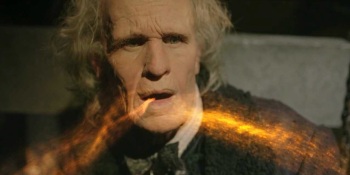 Eleven, Clara
Eleven, Clara
So, was there any reason any number of ships, like the papal one, didn’t just blow up the planet instantly? Eleven regenerates, after we suddenly learn the Doctor is on his last regeneration. (Really? Was there any reason not to have mentioned that a season ago and then done something with it?) We get sudden answers to multi-season-long questions that turn out not to be very interesting. And the end is a cheat. I do love the church, and Clara is quite good for Clara. It doesn’t fit together as satisfyingly as it should have, but it is about the moments, and a lot of those are good.
#9 The Snowmen (2012)
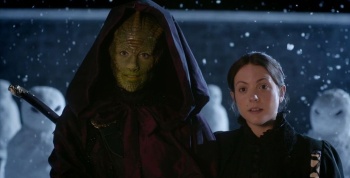 Eleven, Clara, Paternoster Gang
Eleven, Clara, Paternoster Gang
An episode that would have been greatly improved by eliminating The Doctor. He is unnecessary to the plot. Clara, Vastra, Jenny, and Strax are all that’s needed and are all wonderful. Clara would never be this much fun again while the other three prove they deserve a spin-off. Unfortunately the villain turns out to be less than advertised and the plot is equally uninteresting. I watch this for the sidekicks. Think about how good the end of S7 and all of S8 could have been if this version of Clara had become the companion.
#8 The Runaway Bride (2006)
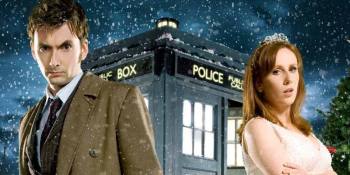 Ten, Donna
Ten, Donna
Donna is always a bit shrill, but here she is truly unpleasant. Her mother is… wow… Doctor Who hates mothers. Donna gets better over time; her mother does not. The story isn’t great and the FX spider is worse. It’s fast-paced, which helps, and funny, which helps more. But it is Ten that makes it all work. He switches from emotional & dramatic to funny to an action hero three times in the same scene and it always works.
#7 Twice Upon a Time (2017)
 Twelve, One, Bill
Twelve, One, Bill
It leans more on nostalgia than I’d like, but new Who has rarely done it so well, and if that’s the plan, going back to the first Doctor is nice. There really isn’t a plot, although for a while the two Doctors think there is one. This is about two dying Doctors thinking about their past and if they want to go forward. The play between the two of them is good, and the nods toward your racist uncle are funny and relevant. It’s very sentimental, but then the Xmas eps usually are, and this one isn’t cloying. I wouldn’t have tossed Bill in (her ending has been mangled enough), but this is her best appearance, so it worked out.
#6 The Next Doctor (2008)
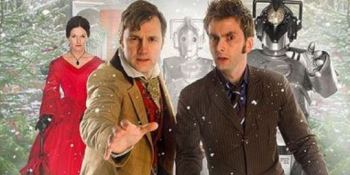 Ten, Jackson Lake
Ten, Jackson Lake
A real shame that David Morrissey wasn’t the next Doctor. He would have been excellent. He’s very good in his very brief run. If there is a failing, it is that it didn’t keep the ruse going longer. Miss Hartigan is a sympathetic villain. And it is one of the best-looking episodes. The use of color is stunning. How much you like this episode seems to be based on how you feel about a daikaiju cyberman.
#5 Voyage of the Damned (2007)
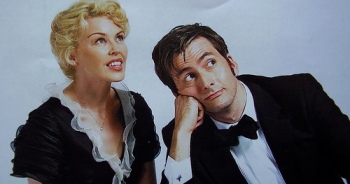 Ten, Astrid
Ten, Astrid
It’s The Poseidon Adventure in space. How much you like it will depend on how much you liked that film. I liked it a lot. I’ve never understood the Astrid hate. She makes a good, if very traditional, companion. This might be more like a regular episode than many of the Xmas eps, but also feels epic.
#4 The Christmas Invasion (2005)
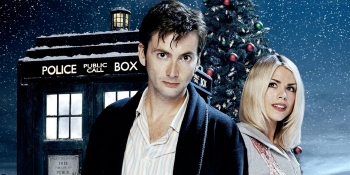 Ten, Rose
Ten, Rose
The Doctor sleeps through two-thirds of the episode, leaving us with a struggling Rose, Mickey, and Jackie. It also gives us the welcome return of Harriet Jones. Once Ten wakes, it sails with David Tennant showing off some impressive acting chops (and the ability to clearly speak twice as fast as any normal human). An extra point for Santas with weapons and a buzz saw tree.
#3 A Christmas Carol (2010)
 Eleven, Amy, Rory
Eleven, Amy, Rory
It violates one of the fundamental rules of time travel set up early on in the show’s history, and it is a version of A Christmas Carol, which is the most overused Christmas story in existence, but somehow it still works. Part of that is the music. Casting mezzo-soprano Katherine Jenkins was genius.
#2 The Unquiet Dead (2006)
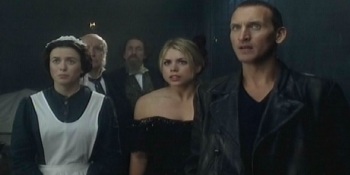 Nine, Rose
Nine, Rose
My favorite of the historical celebrity episodes. Everything is done right. It’s a spooky ghost story with well-developed secondary characters, plenty of emotion, lots of humor, and a bit of meaning. It is pretty much the perfect standard Doctor Who episode; to beat this the series had to do something unusual, and do it well. It happened, but not often.
#1 The Husbands of River Song (2015)
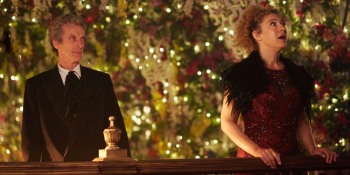 Twelve, River
Twelve, River
Peter Capaldi’s Doctor had been improving over the year but this Christmas special is where he nails it and becomes one of the best Doctors. Everything around him is as good. The script is the best the show has seen in years. There is wit, fun, and the right amount of emotion at the end. The story works, but it doesn’t matter if it did or not. This is about two characters, The Doctor and River Song, interacting, and it shines.









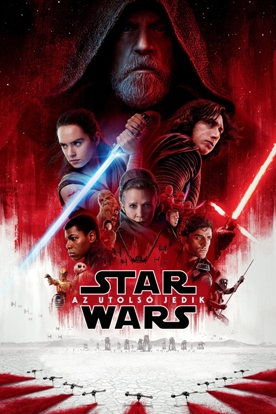


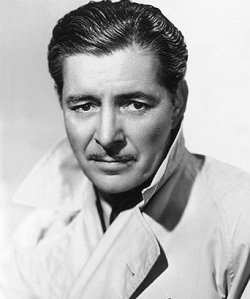 The best film stars are defined by their voices and none had a finer voice than Ronald Colman; I would bet it has been imitated more often than any other. His good looks got him parts in silent cinema, but when the talkies came along, he really bloomed—the man with the mellifluous voice. But even with that liquid gold voice, great parts were few and far between, and even this list of his best films gets a bit weak toward the end.
The best film stars are defined by their voices and none had a finer voice than Ronald Colman; I would bet it has been imitated more often than any other. His good looks got him parts in silent cinema, but when the talkies came along, he really bloomed—the man with the mellifluous voice. But even with that liquid gold voice, great parts were few and far between, and even this list of his best films gets a bit weak toward the end.

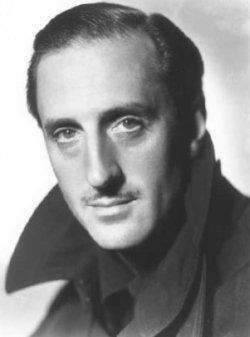 An actor with both one of the most distinctive profiles and most distinctive voices in Hollywood, Basil Rathbone became identified with Sherlock Holmes to his dismay. He should have taken more joy in the connection as few of his other lead roles have been remembered. He was in a large number of classic films, but, except for
An actor with both one of the most distinctive profiles and most distinctive voices in Hollywood, Basil Rathbone became identified with Sherlock Holmes to his dismay. He should have taken more joy in the connection as few of his other lead roles have been remembered. He was in a large number of classic films, but, except for 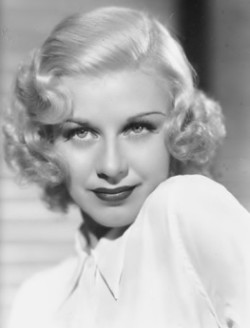 Ginger Rogers will forever be known as the dancing partner of Fred Astaire; they fit together. Together they made some of the greatest film musicals of all time. She could manage the steps, as well as both the sophisticated and common attitudes needed for the comedy and romance. Astaire danced with others who were technically better, but no one who was such a perfect partner. Apart from Astaire she strove to have a “serious” career (after a group of “let’s put on a Broadway show” films) that led to a string of turgid melodramas that she could never pull off—not that anyone could have made Kitty Foyle watchable. Her best “solo” works were comedies.
Ginger Rogers will forever be known as the dancing partner of Fred Astaire; they fit together. Together they made some of the greatest film musicals of all time. She could manage the steps, as well as both the sophisticated and common attitudes needed for the comedy and romance. Astaire danced with others who were technically better, but no one who was such a perfect partner. Apart from Astaire she strove to have a “serious” career (after a group of “let’s put on a Broadway show” films) that led to a string of turgid melodramas that she could never pull off—not that anyone could have made Kitty Foyle watchable. Her best “solo” works were comedies.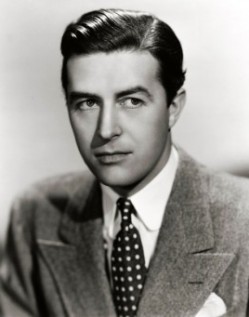 Handsome and debonair, Milland’s early career was mainly in romantic comedies and light action films. His big break came with The Jungle Princess (1936), which made Dorothy Lamour a star as The Sarong Girl. His reputation changed with The Lost Weekend (1945) which won multiple Oscars, but is hard to view as anything other than suffering-porn now—it lacks a plot and an ending. It was no doubt important for people who never realized that alcoholism was bad. But this did alert Hollywood to his skill as a serious actor.
Handsome and debonair, Milland’s early career was mainly in romantic comedies and light action films. His big break came with The Jungle Princess (1936), which made Dorothy Lamour a star as The Sarong Girl. His reputation changed with The Lost Weekend (1945) which won multiple Oscars, but is hard to view as anything other than suffering-porn now—it lacks a plot and an ending. It was no doubt important for people who never realized that alcoholism was bad. But this did alert Hollywood to his skill as a serious actor.
 Basil Rathbone starred as Sherlock Holmes in 14 films, with Nigel Bruce as a blustering, foolish Doctor Watson. When I watched these as a child—broadcast one each week by a local TV station—I treated them like a TV show, with all of the movies being approximately the same. They aren’t.
Basil Rathbone starred as Sherlock Holmes in 14 films, with Nigel Bruce as a blustering, foolish Doctor Watson. When I watched these as a child—broadcast one each week by a local TV station—I treated them like a TV show, with all of the movies being approximately the same. They aren’t.